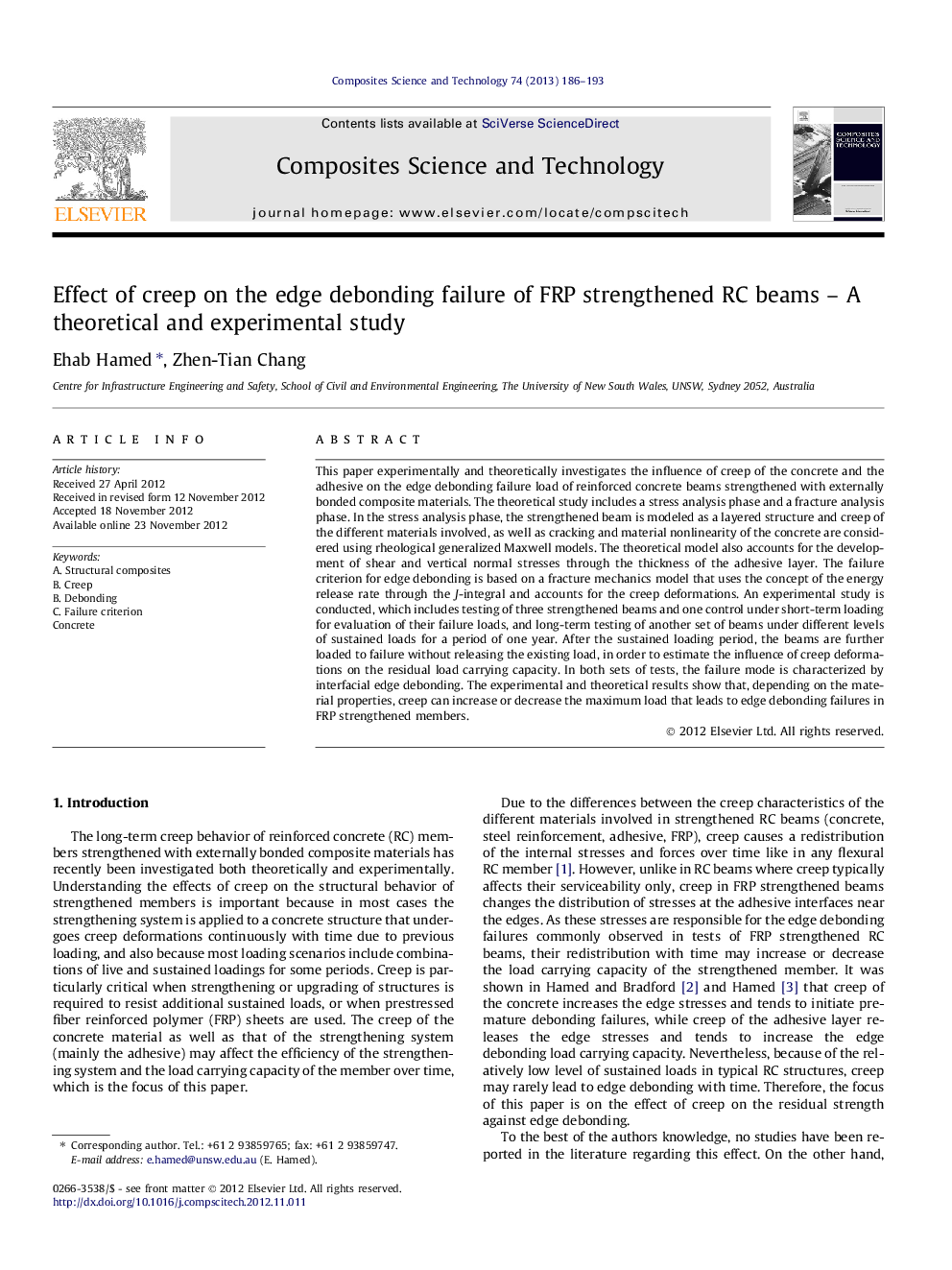| Article ID | Journal | Published Year | Pages | File Type |
|---|---|---|---|---|
| 820745 | Composites Science and Technology | 2013 | 8 Pages |
This paper experimentally and theoretically investigates the influence of creep of the concrete and the adhesive on the edge debonding failure load of reinforced concrete beams strengthened with externally bonded composite materials. The theoretical study includes a stress analysis phase and a fracture analysis phase. In the stress analysis phase, the strengthened beam is modeled as a layered structure and creep of the different materials involved, as well as cracking and material nonlinearity of the concrete are considered using rheological generalized Maxwell models. The theoretical model also accounts for the development of shear and vertical normal stresses through the thickness of the adhesive layer. The failure criterion for edge debonding is based on a fracture mechanics model that uses the concept of the energy release rate through the J-integral and accounts for the creep deformations. An experimental study is conducted, which includes testing of three strengthened beams and one control under short-term loading for evaluation of their failure loads, and long-term testing of another set of beams under different levels of sustained loads for a period of one year. After the sustained loading period, the beams are further loaded to failure without releasing the existing load, in order to estimate the influence of creep deformations on the residual load carrying capacity. In both sets of tests, the failure mode is characterized by interfacial edge debonding. The experimental and theoretical results show that, depending on the material properties, creep can increase or decrease the maximum load that leads to edge debonding failures in FRP strengthened members.
